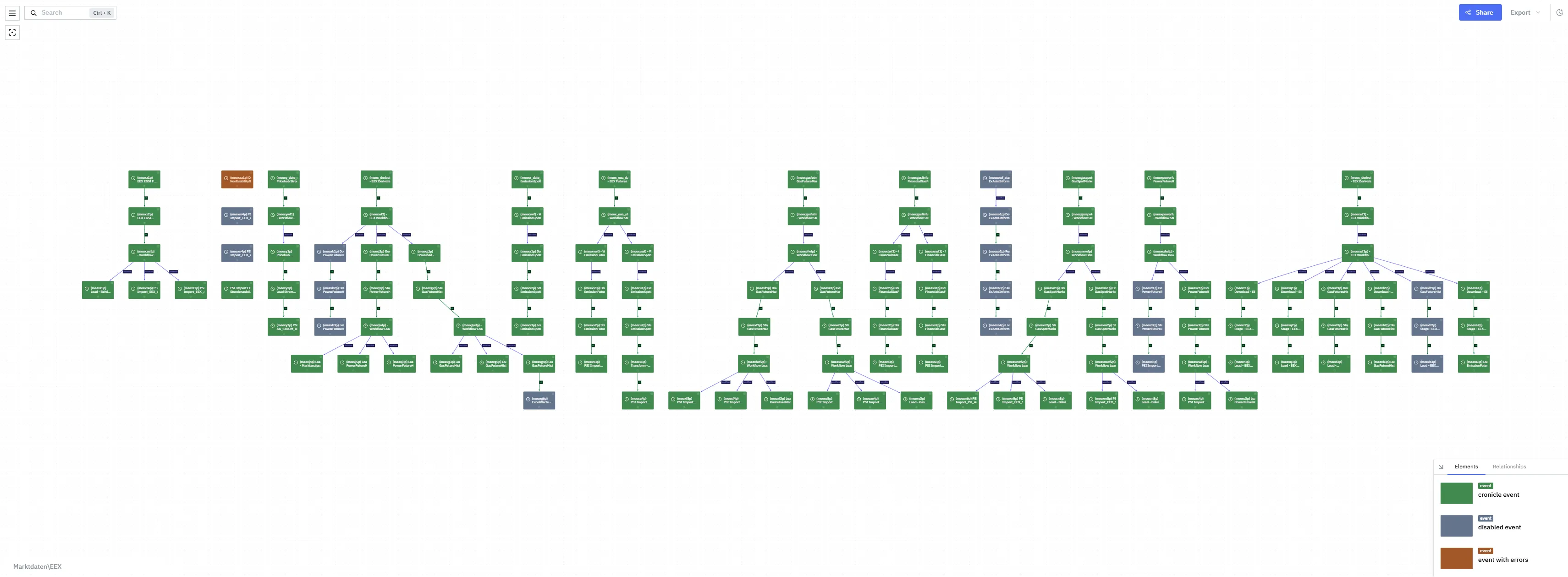Visual Ops with LikeC4
When you’re dealing with thousands of scheduled jobs and complex workflows, it’s easy to get lost in logs, IDs, and dashboards.
One of our community members recently shared a brilliant use case that shows how LikeC4 can make sense of it all - visually, clearly, and in real time.
“My scheduling system defines ~1700 jobs, some of which are combined into complex workflows. The scheduler lacks visualization, so I used LikeC4 to generate interactive diagrams - live and linked to our systems.”
From Schedules to Systems Diagrams
Section titled “From Schedules to Systems Diagrams”Guys shared their setup, which is clean and powerful:
- A Python script pulls job/workflow definitions from a scheduler’s REST API.
- These are turned into LikeC4 models and views, automatically.
- A WebSocket stream delivers live status updates: running, successful, failed, deactivated.
- The script updates the model on the fly, likec4 picks up the changes and with HMR (hot module replacement) the diagram is updated in real time.
- Each element in the diagram links directly back to the scheduler software UI.
The result?
A living, breathing map of workflows and job states - with errors, dependencies, and critical paths clearly visible at a glance.
“We can immediately see where errors are, and jump straight from the graph to the job in our scheduler UI. This helps us immensely.”

What’s Next? Visualizing More than Just Jobs
Section titled “What’s Next? Visualizing More than Just Jobs”This setup is already saving time for the team and reducing cognitive load.
But their roadmap is even more exciting:
- External dependencies: Highlight which jobs interact with FTP servers, external APIs, or file systems.
- Data lineage: Track which jobs feed data into others, forming real-time pipelines.
- Ownership & responsibility: Annotate nodes with responsible teams or service owners.
- Audit trails: Show historical changes in job structures and dependencies over time.
- Incident response: Use live job status overlays for real-time troubleshooting dashboards.
Build Your Own Visual Operations Layer
Section titled “Build Your Own Visual Operations Layer”The power of LikeC4 lies in turning abstract system definitions into structured, visual models that update in real time. This isn’t just architecture documentation - it’s operational visibility.
If you’re managing workflow and jobs, Airflow DAGs, CI pipelines, or microservices with unpredictable interactions - LikeC4 might be the visibility layer you didn’t know you needed.